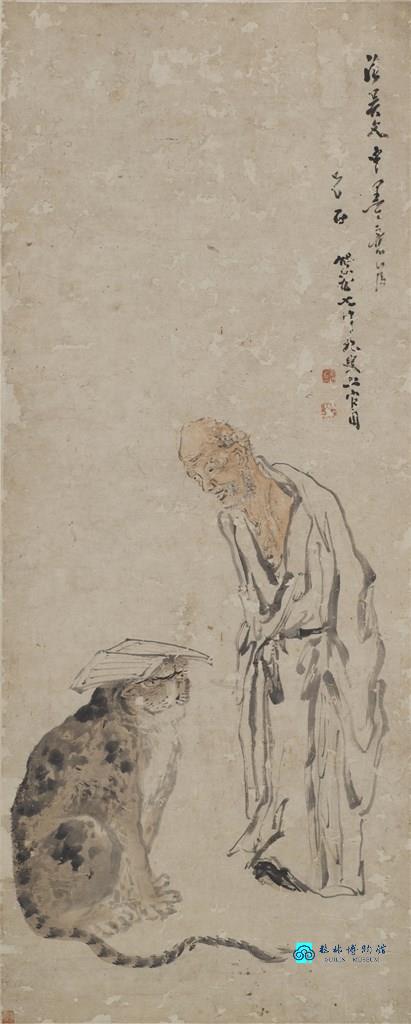Tiger and Tiger-taming Arhat by Shangguan Zhou, hanging scroll; ink and color on paper; Qing Dynasty
Figure paintings in theQing Dynasty were not as advanced as landscape or bird-and-flower paintings. Yet portraiture obtained significant development, which prevailed in imperial court, and among common people, literati and officialdom without exception. Shangguan Zhou was exactly an artist adept at creating figure paintings of the Qing Dynasty. He was one of the "Three Excellent Artists of Western Fujian" during the reigns from Emperor Kangxi to Emperor Qianlong.
This Tiger and Tiger-taming Arhat originated from a Buddhist story. It is said that the eighteenth Arhat is exactly Maitreya. A fierce tiger usually roared for hunger outside the temple that he lived in. Maitreya thus shared his food with this tiger. As time went by, this tiger was subdued by him and often played with him. Therefore, he is known as the "Tiger-taming Arhat". As you can see, the tiger in the painting crouches on the ground obediently and carries a volume on its head. The Arhat stands beside the tiger and reads the book with a smile on his face. It is said by Laozi that "keeping a low profile can be seen as wisdom, keeping soft and gentle can be deemed as strong". The Tiger-taming Arhat established morality through gentleness and adhered to Buddhism through benevolence. Maitreya and his tiger jointly narrate this old story about virtue and morality as well as harmonious coexistence.



